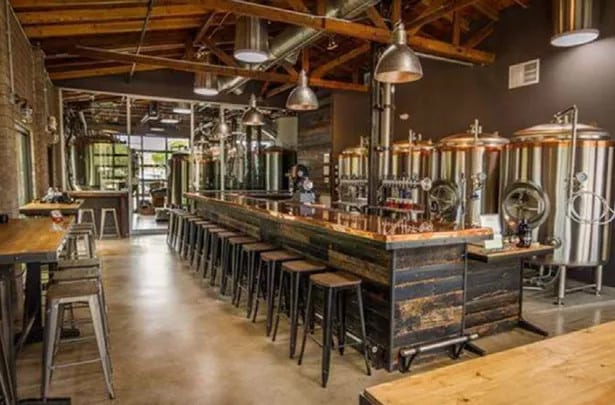The Micro-Distillery Revolution: The Future of Rum?

The rum universe is at a historic turning point.The industry, rooted in centuries-old traditions and dominated by titans who have shaped the global market, faces a wave of innovation and disruptive change. At the epicenter of this transformation are micro-distilleries, dynamic and pioneering agents that are redefining the frontiers of rum production and appreciation.
As the author responsible for this research and a passionate connoisseur of the rum industry, I am proud to conduct this in-depth analysis of the revolution being brought about by micro-distilleries. During my research, I have had the privilege of delving into this exciting world of rum, exploring how these smaller entities are challenging convention, introducing innovative methods and catalyzing a renaissance in the diversity and quality of rums available on the market. My intention is to share with you my personal findings from this exciting journey through the bowels of the rum industry, highlighting both the palpable impact and potential that these micro-distilleries have on the future of rum.
Short History of Rum Distillation
Origins and Evolution
Rum distillation is an ancient practice, intricately woven into the tapestry of global and regional history. Originating in the sugar cane plantations of the Caribbean in the 17th century, rum has witnessed and participated in critical episodes, from colonization to the independence and globalization of various nations. Distillation and production methods have evolved over time, transforming with technological advances, economic fluctuations, and changing consumer preferences.
Large Distilleries and their Dominance in the Industry
Over the centuries, a conglomerate of large distilleries has emerged, establishing a tight grip on the rum industry. Equipped with significant resources, economies of scale, and expansive distribution networks, these distilleries have largely dictated the prevailing norms, standards, and trends. Its dominance has been characterized by mass production and standardization, aimed at meeting a growing global demand.
This landscape historically dominated by big players has maintained, to some extent, a uniformity and consistency in the product offered, but has also limited diversity and innovation in terms of flavor profiles and production techniques. Tried and true formulas have been the norm, while experimentations and derivations have often been viewed with skepticism or reserved for smaller market niches.
Nonetheless, we are witnessing a transition, an opening towards diversification and a greater inclusion of alternative approaches and renewed methods in rum distillation. Micro-distilleries emerge as key players in this new chapter, challenging tradition and exploring new horizons of possibilities in rum production. In this context, it is imperative to analyse how these new entities are influencing and could redefine the future of the rum industry.
Emergence of Microdistilleries
Definition and Differentiation
Micro-distilleries, as the name suggests, operate on a significantly smaller scale compared to traditional distilleries. They are entities that prioritize quality, authenticity and innovation, allowing themselves to experiment with various techniques, ingredients and processes in the creation of unique and distinctive rums. While large distilleries often follow established formulas and seek consistency across large production volumes, micro-distilleries are more inclined towards exploring and defining their own distinctive identity in each bottle produced.
Success Stories and Global Expansion
There are numerous examples of micro-distilleries that have gained recognition and have greatly influenced the industry. Among them, we can mention “Rum Company” in Germany, which has been praised for its ability to combine tradition and modernity in its products. Its focus on high-quality ingredients and precise distillation techniques has cemented its place in the hearts of rum aficionados.
Beenleigh Artisan Distillers (Australia) stands out as a micro-distillery that has successfully navigated the waters of tradition and innovation, offering rums that reflect both history and contemporaneity in their production and presentation.
Richland Rum (United States) Located in Georgia, Richland Rum prides itself on being a “Single Estate Old Georgia Rum Distillery,” where all aspects of rum production are performed on-site, ensuring rigorous quality control and consistency in its products.
Nine Leaves (Japan) Nine Leaves has captured the attention of rum enthusiasts with its unique Japanese approach to distillation. Using local Japanese ingredients and specific distillation techniques, they have created distinctive rums that reflect their cultural heritage.
Paranubes (Mexico) Produced in Oaxaca, Paranubes Rum is an agricultural rum that reflects the biodiversity and wealth of the region. It has earned a place in the rum world with its unique flavour and sustainable production method.
Foursquare Distillery (Barbados) Although larger and better known than many other micro-distilleries, Foursquare has maintained a dedication to producing quality rum and has pioneered many aspects of rum innovation.
La Distillerie de Paris (France) This Parisian distillery has explored new frontiers in rum distillation, experimenting with different ingredients and techniques to create rums that defy traditional expectations.
Regalo de Vida is a distillery (United States) located in southern Arizona that has won numerous international awards for its rums, made with local sugar cane (from northern Mexico) and distilled in traditional stills. Among its awards are two Best of Shows, five Best of Class and several double gold and platinum medals awarded by IWSC in London and The San Francisco World Spirits Competition, including this year’s Best of Class Extra Aged Rum.
Desert Diamond Distillery (United States) is another Arizona distillery that has stood out for the quality of its rums, made with molasses and aged in unique barrels. It was the highest scoring rum, and the only one with a perfect score, at the IWSC in London, in addition to winning double gold at the New York Wine and Spirits Competition.
Richland Distilling Company (United States)
Innovative Technologies and Methods
Distillation Techniques Used by Microdistilleries
Micro-distilleries, in their constant quest for quality and differentiation, often adopt, adapt and develop innovative distillation techniques that deviate from conventional methods. The flexibility and manageable scale of these distilleries allow for more agile and diverse experimentation. For example, some micro-distilleries are exploring low-temperature distillation, a technique that allows for more precise separation of the components of the distillate, resulting in a rum with a cleaner, more defined flavor profile.
In addition, there has been a notable adoption of unique and diverse barrels for the aging process. This includes the use of barrels that previously contained different types of wine, whiskey, or even beer, to impart additional complexities and unique characteristics to the final rum.
Sustainability and Production Efficiency
Sustainability has become a central consideration for many modern micro-distilleries. The implementation of sustainable practices varies from the handling of by-products and waste generated during distillation to the source of the ingredients used. For example, some distilleries have adopted water and energy recycling systems to minimize their environmental impact.
In addition, there has been a renewed emphasis on the use of local and sustainable ingredients. This approach not only supports local economies and promotes biodiversity, but also contributes to the creation of rums with distinctive character and terroir.
Even in the packaging and presentation of the products, there is a conscious approach towards recyclable or reusable materials, and a reduction of superfluous or environmentally harmful elements.
Impact on Rum Diversity and Quality
Variety of Styles and Flavors
Micro-distilleries have been crucial catalysts in broadening the spectrum of styles and flavors available in the rum market. Through their dedication to experimentation and craftsmanship, these distilleries have introduced a richer and more varied range of products. From pure, robust agricultural rums to delicately aged rums with intricate flavor profiles, the influence of micro-distilleries has encouraged a deeper exploration of what rum can offer.
The innovative use of different types of barrels for aging, various types of yeasts for fermentation, and the exploitation of the unique qualities of local sugarcane varieties have contributed to this expansion of diversity in the world of rum.
Contribution to Authenticity and Uniqueness
The contribution of micro-distilleries goes beyond mere variation in taste and style; they have been instrumental in introducing and reinforcing a sense of authenticity and uniqueness in rum production. Micro-distilleries often cultivate a strong connection with their locality, incorporating local traditions, ingredients, and narratives into their products and practices.
This local connection not only infuses each bottle with a sense of place and purpose but also promotes a deeper appreciation of the cultural and geographical diversity in rum production. Instead of generic, homogenous rums, consumers are now able to explore rums that carry with them unique histories, traditions, and terroirs, fueling a richer appreciation and stronger connection with the products they choose.
This influence of micro-distilleries, by celebrating and promoting authenticity and uniqueness, is playing a vital role in elevating rum as a spirits category worthy of more sophisticated and deeper recognition and appreciation.
Challenges and Opportunities.
Regulations and Barriers for Microdistilleries
Micro-distilleries, despite their innovation and contribution to the diversity of the rum industry, face significant challenges in terms of regulations and barriers to entry. Rigorous regulations, high taxes, and limited access to traditional distribution channels can hinder the growth and expansion of these small distilleries.
In addition, regulations around the production and sale of alcohol can vary greatly from region to region, creating a complicated landscape that micro-distilleries must navigate carefully. This can influence crucial aspects such as export, labeling, permitted ingredients and production protocols.
Competitive Advantages and Market Challenges
Despite these challenges, micro-distilleries possess unique competitive advantages. Their size and focus allow them to be agile and adaptive, responding to market trends and consumer preferences with a speed that can be difficult for larger, more established distilleries.
Micro-distilleries can also capitalize on their authenticity, unique histories, and artisanal production practices to capture the interest of consumers seeking experiences and products with greater depth and meaning. This can allow them to establish a stronger and more loyal connection with their customer base, as well as command premium prices for their products.
However, these distilleries also face challenges in terms of scale, access to quality raw materials, and competition with large established producers and other emerging players. Building a strong brand, effective networking and continuous innovation are essential to stay relevant and competitive in this dynamic market.
The Role of Micro-Distilleries in the Local Economy
Fostering Local Economies and Job Creation
Micro-distilleries play an essential role in boosting local economies. By being located, in many cases, in smaller or more rural places, they directly contribute to local employment and the revitalization of their communities. In addition, they often use local ingredients and services, from sugarcane to packaging materials, benefiting other businesses and sectors within the community.
This active and connected role in the local economy not only helps to keep certain agricultural traditions and practices alive but also promotes diversified and sustainable economic development. Thus, micro-distilleries become valuable actors in their communities, contributing to economic resilience and sustainability.
Collaborations and Support Networks
Collaborations are also critical in how micro-distilleries operate and thrive. Through partnerships with other local producers, hospitality businesses, and participation in industry networks and events, micro-distilleries can build a strong network of support and cooperation.
These collaborations can facilitate knowledge sharing, access to new markets and opportunities, and the creation of unique products and experiences for consumers. In addition, through these networks, micro-distilleries can also play a role in promoting tourism and local culture, attracting visitors and rum lovers to their regions and distilleries.
Future Projections and Trends
How Could Micro-Distilleries Influence the Evolution of Rum?
Micro-distilleries are well positioned to be significant driving forces in shaping the future of the rum industry. Through their focus on innovation, sustainability, and authenticity, they are likely to continue to influence consumer expectations and preferences, raising the standards of quality and creativity across the industry.
We can anticipate a continuation and expansion of current trends towards rums with strong local and territorial identities, as well as a deeper exploration of unique rum varieties and styles, driven by micro-distillery experimentation.
Global Market Positioning and Expectations
As for the global market, micro-distilleries will likely play a role in diversifying and expanding the perception and appreciation of rum. Through their participation in international markets and industry events, as well as global collaborations, micro-distilleries can help introduce rum as a premium and versatile spirit to a wider audience.
Future expectations could see a consolidation of micro-distilleries’ position within the market, allowing them to compete more effectively with larger, established producers. However, they will also face the challenge of maintaining their unique identity, mission and quality while navigating the demands and opportunities of a wider global market.
Conclusions
Micro-distilleries have emerged as transformative players on the rum stage, infusing the industry with renewed vitality, innovation and diversity. Through their commitment to craftsmanship, sustainability and authenticity, they have redefined expectations and standards, taking rum to new heights of appreciation and sophistication.
These distilleries represent more than just businesses; they are custodians of tradition, innovators and communities themselves, contributing significantly to the socio-economic and cultural fabric of their localities and the global rum industry.
As we contemplate the future, it is essential to recognize the continued potential of micro-distilleries to influence the direction and character of the rum industry. Your ability to adapt, innovate and connect with communities and consumers will be crucial in navigating an ever-changing market and maintaining rum’s relevance and resonance in the spirits world.
Micro distilleries, with their passion and unique perspective, are equipped to lead rum towards exciting horizons, promoting an industry that celebrates diversity, quality and authenticity in every aspect of rum production and appreciation. Along the way, exciting discoveries, challenges and triumphs await us in the rich and varied history of rum.
As a rum industry insider, do you have any suggestions about this article? Feel free to let me know your comments and suggestions: camilo@empresasfh.com
Source:
- Privateer Rum
- The Rum Collective
- The Lone Caner
- The Spirits Business
- Distillery Trail
- American Craft Spirits Association
- Google Scholar
- Miami Rum Congress
Featured image: Business Live
About The Author
Camilo is an audiovisual communicator with over 15 years of experience. He resides in Caracas, Venezuela, and has studied film and television, acquiring skills in writing film scripts. He currently works as a Digital Content Manager at TRL. If you would like to see his portfolio, you can visit his website at http://ccesarino.com.













